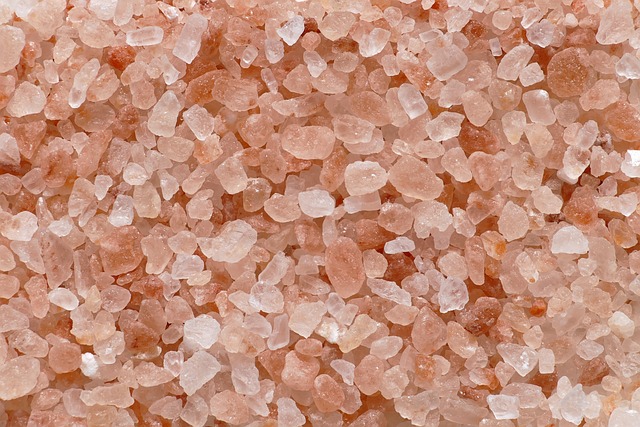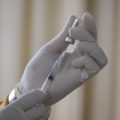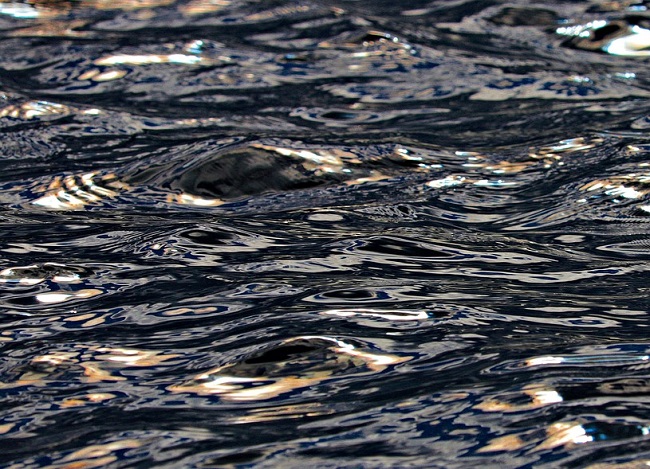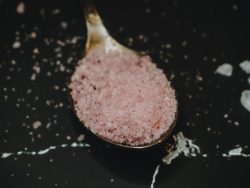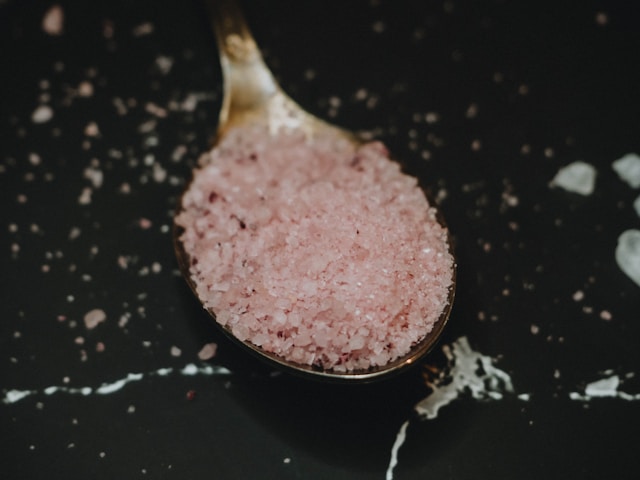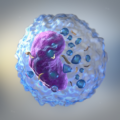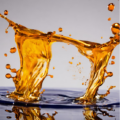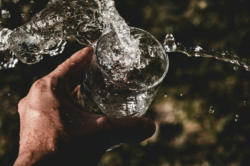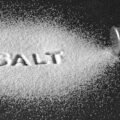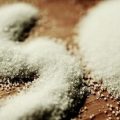I, along with some of our medical team and regulatory approval team recently had the opportunity to read the article: Himalayan Salt – Flint on Global Scale? posted on Hormones Matter. The article generated an extensive and impressive number of readers and so I hope to share some information that may help make important distinctions about how people can protect themselves from undo lead exposure while maintaining a clear and level headed approach to the products they consume.
Disclosure of Potential Conflicts of Interest
In full disclosure, we supply Original Himalayan Crystal Salt®. In fact we are the only company that has a certificate of analysis on our source of Himalayan Salt, which was the one you referred to. All other suppliers in the U.S. have never done an analysis demonstrating 84 trace minerals or the levels of minerals in their salt, so we can not confirm what is in there. (As a side note, I want to thank you for bringing something to our attention. The website you referenced in this post for the analysis was using the analysis on our Original Himalayan Crystal Salt® while selling a different Himalayan salt that is not associated to that analysis!)
The information I am providing references our salt. I cannot comment on other company’s Himalayan Salt, but only our own Original Himalayan Crystal Salt® as referenced in the book, Water & Salt the Essence of Life.
Our concern is that in the effort to educate people about the tragedy in Flint, Michigan, and by targeting Himalayan Salt a distorted view of the amount of lead in products that people should be concerned about was presented. As a result, an unwarranted and unfounded fear about using Himalayan Salts has been created.
Concerns about Himalayan Salt
Please don’t think that we do not understand that there are concerns over Himalayan Salt. However, the concerns relate to it being spiked with other salt or plastic, explosives being used in the mining process and the dangers and potential contaminants from that process, the “slave” wages that can occur in this region with workers, the use of metal grinders where small particles can come off, versus the use of traditional stone grinders, and the list goes on. Not to mention none of the other sources of Himalayan Salt have ever done full mass analysis of their salt to show what minerals or amounts are in their salt or if their salt has health benefits. The different mining regions are hundreds of miles apart and have different mineral profiles. They have simply referenced all our research and said ‘ours is the same’… now that would be a better story!
About Lead in Food and Water
In relation to the blog post, as you know lead is a naturally occurring element and while it is in very small amounts, the elemental composition of the human body contains lead as well as other trace elements [1]. We also have levels of lead in our blood with the CDC having set a blood lead level (BLL) of 10 µg/dL for adults and 5 µg/dL for children.
The typical daily intake from food sources is between 5-50 mcg [2]. Some of the highest levels of lead are found in seafood (average of 0.2 ppm or 200ppb) and foods grown in high lead soil, as well as our environment [2]. Lead can be found in the air we breathe, the soil that grows our foods and the earth our children play on, drinking water, contaminated pipes, certain foods and paint [3]. With that being said, there are standards set by the U.S. government (EPA, FDA, OSHA, CDC and CPSC) [4] to regulate the amount of exposure one might experience since it is well-known that excessive exposure has health implications. The article presents the lead levels for water, however, because actual levels approved for salt or any of the other things that expose us to lead were not cited, the audience had no frame of reference and were comparing apples and oranges.
In your article you referred to the EPA standards that the lead level of zero is acceptable in drinking water [4]. To clarify, this level is set for drinking water, not all sources that one might be exposed to and this is where confusion has been created and may have mislead the audience. Comparing lead levels found in Original Himalayan Crystal Salt® cannot be compared to that found in drinking water, as the regulatory levels are different. A lead level of 15 µg /L or higher in drinking water is cause for action by the EPA. This equals 0.015ppm or 15 ppb [3,4]. The report on CNN indicated that the homes in Flint, MI showed 13,000 ppb. No doubt, this is cause for concern.
When we are talking about food and food sources, the FDA has set different guidelines. The action level for foods is set at 0.5 µg /mL, which equates to 500ppb [3,5]. As you stated, Original Himalayan Crystal Salts® contain 100ppb, which is 1/5 of the level that would cause the FDA to take action on a food source. The most common sources of lead in food can happen during the production or packaging of foods. The CDC states that the bright red and yellow paints found on bread bags and on candy may contain lead. The way in which food is stored can also contribute to lead exposure. Candy, especially chili-based from Mexico, may be a source of lead contamination [5]. An extensive study was published in 2010 [6] that found lead in many sources of foods including:
- Cereal and cereal products
- Sugar and sugar products, chocolate
- Fats (animal and vegetable)
- Vegetables, nuts and pulses
- Starchy roots and potatoes
- Fruits
- Juices, soft drinks and bottle water
- Coffee, tea and cocoa
- Alcoholic beverages
- Meat and meat products, offal
- Fish and seafood
- Eggs
- Milk and dairy based products
- Miscellaneous and special dietary foods
- Tap water
Based on this study, consumers may find it interesting that some of the foods with the highest lead levels were:
- Coffee: averaging 0.22ppm or 220ppb [6]
- Meat: averaging 0.2534ppm or 253.4ppb [6]
- Various dietary herbs, including algae and algae based supplements: average 0.3652ppm or 365.2ppb [6]
All of which we consume in much higher quantities than salt. Proposition 65 regulations in California are also important to review as they are even more stringent and combine lead levels in food, supplements etc. with the amount consumed of that item. Our Original Himalayan Crystal Salt® is also Proposition 65 compliant. I think it is important for consumers to know all of the food sources that contain lead so they can truly make informed decisions. And they should also be informed of the other sources of lead contamination so decisions can be made about how to reduce their total exposure.
Other Elements in Salt
When talking about salt, it is also important to differentiate between the various salt sources. Table salt contains sodium and chloride (NaCl) and may contain iodine depending on which version you purchase. It is refined at very high temperatures, altering the chemical structure and bioavailability. Additionally, it is chemically cleaned, bleached and treated with an anti-clumping agent so it won’t stick. The two most common anti-clumping agents are sodium alumino-silicate and calcium aluminosilicate, both of which are a source of aluminium [7]. In relation to sea salt, due to pollution in our oceans we have increased concern about mercury and petro-chemicals and the list goes on.
Original Himalayan Crystal Salt® comes from the earth, specifically the Himalayan Mountains. It contains 84 trace minerals including sodium, chloride, potassium, calcium, magnesium, iodine, iron, zinc, manganese and others, all of which the human body needs for optimal function. It is hand mined using no explosives, we pay workers living wages with a Quality Control process that includes testing batches and use stone grinders, not metal, to ensure no contamination and that Original Himalayan Crystal Salt® does not pose a threat to the health of consumers who use it [1,2,7,8].
Regards,
James Frame, CEO
Natural Health International, Original Himalayan Crystal Salt, and Femmenessence
References:
- Rolfes S., Pinna K, & Whitney E. Understanding Normal and Clinical Nutrition. Belmont, CA: Wadsworth Cengage Learning; 2012.
- Stipanuk M & Caudill M. Biochemical, Physiological and Molecular Aspects of Human Nutrition. St, Louis, MO: Elsevier; 2013.
- Lead Toxicity Where is Lead Found? Agency for Toxic Substances and Disease Registry Website. http://www.atsdr.cdc.gov/csem/csem.asp?csem=7&po=5.
Published August 20, 2007. Updated August 20, 2010. Accessed January 27, 2016. - Lead Toxicity, What Are the U.S. Standards for Lead. Agency for Toxic Substances and Disease Registry Website. http://www.atsdr.cdc.gov/csem/csem.asp?csem=7&po=8 Published August 20, 2007. Updated August 20, 2010. Accessed January 27, 2016.
- Lead and Copper Rule. United States Environmental Protection Agency Website. http://www.epa.gov/dwreginfo/lead-and-copper-rule. Updated January 6, 2016. Accessed January 27, 2016.
- Scientific Opinion on Lead in Food. EFSA Journal 2010;8(4):1570. http://www.efsa.europa.eu/sites/default/files/scientific_output/files/main_documents/1570.pdf. Published April 20, 2010. Updated March 22, 2013. Accessed January 26, 2016.
- Hendel B and Ferreira P. Water & Salt The Essence of Life. Natural Resources; 2003.
- Saldanha, Carlin N.D. Why the right Salt is essential to your health.
